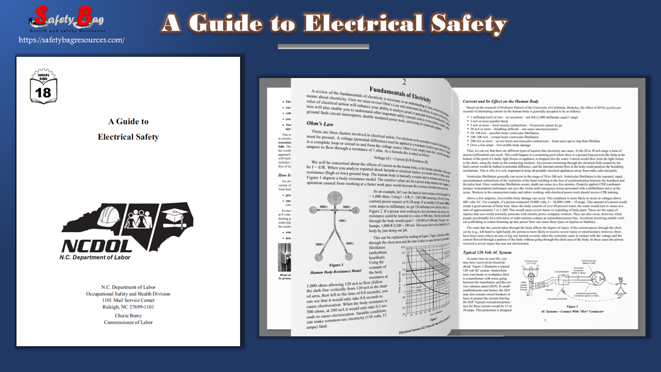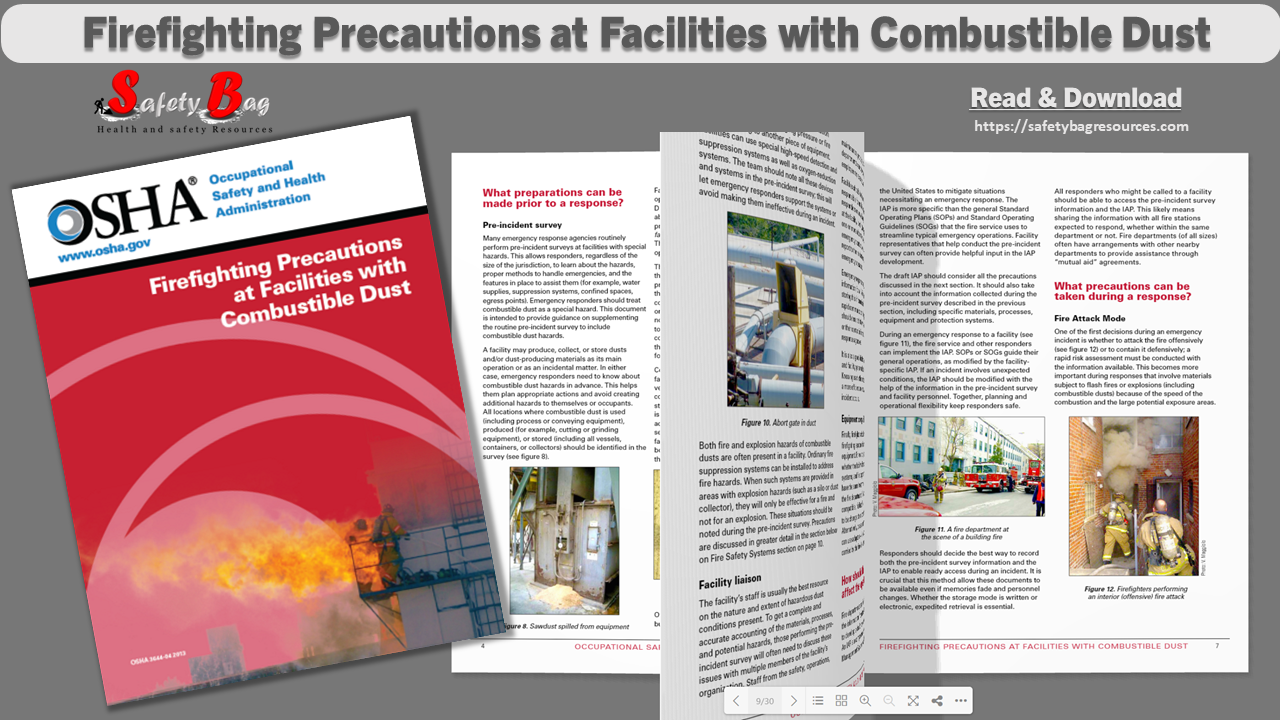Let’s Talk safety 52 common Tool Box talks on common utility on Safety Practices for Water Professionals. Copyright © 2012 American Water Works Association.Printed in the United States of America
About Let’s Talk Safety
The American Water Works Association is pleased to provide you with this 2012 edition of Let’s Talk Safety. Contributing editor Charles Basham and AWWA staff have reviewed, updated, and edited the discussion topics to ensure they continue to be current, pertinent, and beneficial to you and your employees. Web site addresses at the end of every article allow you and your staff to conduct deeper research into particular safety topics.
We have timed the weekly placement of certain topics to coincide with national awareness efforts like National Electric Safety Month. We hope you use these opportunities to leverage the importance of a particular safety topic by tying it to a
national campaign.
How to Use Let’s Talk Safety
We are all seeking an injury-free work environment. Our universal goal is to have every employee, every day, return home to his or her family uninjured. We believe that the first step to not being injured is knowing that you can be injured. Let’s Talk Safety is designed to help you build awareness of potential work hazards and provide safety practices that help mitigate those hazards. Talking to your employees about their safety and listening to their safety concerns and experiences are the foundation to building an effective safety culture. This book will help you open up important safety dialogues and give you common starting points for discussion. You may also want to consider placing these articles in your employee safety publications.
Read the Let’s Talk Safety Flipping book :
Here’s how you can make your safety meetings more interesting, engaging, and effective:
- Cover only one safety topic in a meeting. Employees can easily lose focus when too many topics are discussed.
- Ensure the discussion topic is pertinent to the participants. AWWA Let’s Talk Safety covers topics in a generic manner, and a particular talk may not apply t every workplace and every work situation. Be creative and use a topic present here and relate it to your work group’s particular safety issue or concern.
- Involve the employees in the meeting. You may want to appoint a different employee each week to lead the discussion. Ask questions and ask for personal examples of near misses and hazardous situations.
- Don’t let a safety meeting become a complaint session—especially if it’s not about safety! Acknowledge the complaint and let the workers know it will be addressed afterward. Keep the focus on the safety topic at hand.
- Chalkboards, charts, DVDs, and other interactive materials will all help keep the topics interesting and engaging. Change up the meetings occasionally by bringing in the tools or personal protective equipment being discussed. When talking about large equipment, hold the meeting in the yard and use the specific equipment as the backdrop. Occasionally invite guest speakers who are experts in a particular subject.
- Conduct your meetings early in the week so the employees have a chance to practice what they hear.
- Use the “Additional Notes” space we’ve included at the end of most topics to add personal observations and to jot down specific incidents or experiences you want to discuss. Avoid embarrassing a particular employee by pointing that person out as an example of what not to do. Speak in generalities if possible.
- Pass out copies of the Let’s Talk Safety briefing each week.
Also, Read Books: OSHA Fall Protection Toolbox Talks and Trainer Guide
The safety awareness information presented in this book is designed to help your utility workers develop a greater safety awareness of potential job hazards and help them make informed, mitigating decisions. The information contained in Let’s Talk Safety provides only general safety awareness guidelines related to the many aspects of working in the water utility industry. This compendium is not comprehensive and does not cover every potential aspect of a safety issue a typical water utility worker may encounter.
The safety articles are not intended, nor should they be considered, as a substitute for more comprehensive and formal safety training courses and certification programs that provide greater detail and explanation. For employees to do their jobs effectively and safely, they must be responsible for learning and understanding the safety rules and regulations that apply to their particular occupation. Health and safety regulations and requirements mandated by the federal, state, and provincial governments, as well as by your company’s established policies and regulations, need to be consulted before any work begins.
Each article provides a reference for Web-based information that can provide additional information as well as possible updates or changes to safety regulations. Also, review the extensive AWWA safety DVDs that can be purchased to augment safety awareness training. Refer to the back of this book for a list of DVDs and other products that are available.
Download The Book
Books: Let’s Talk Safety
More Downloads
- Books: How to Plan for Workplace Emergencies and Evacuation
- Books: Firefighting Precautions at Facilities with Combustible Dust
- Books: A Guide to Electrical Safety
- Books: Preventing Falls in Scaffolding Operations
- Handbook: Worker’s Safety
- Books: A Guide to Safety in Confined Spaces
- Books: OSHA-Hazard communication for small Entity
- Books: OSHA-Permit Required Confined Spaces
- OSHA: Underground Construction (Tunneling)
- OSHA Recommended Practice of Health and Safety programs in construction
- Books: OSHA-Is it Safe to Enter Confined Space?
- Books: General Industry Digest
- Books: A Guide to Bloodborne Pathogens in the workplace
- Books: 5-Minute Workplace Safety Talks
- CAL/OSHA Scaffold Guide for safe use of supported Scaffolds
- Books: CAL/OSHA Pocket Guide for Construction Industry
- Books: Let’s Talk Safety
- Books: OSHA Fall Protection Toolbox Talks and Trainer Guide
- Tool Box Talk: Don’t Let Chemicals Get to You
- Tool Box Talk: Hand Grinder Safety
- Tool Box Talk: Lockout and Tagging
- Tool Box Talk: Winter Driving Safety Tips
- Tool Box Talk: Working Around Heavy Equipment
- Tool Box Talk: Rotary Hammers-Hammer Drills
- Tool Box Talk: Carbon Monoxide Poisoning
- Tool Box Talk: Boom Truck Safety
- Tool Box Talk: Biohazard Safety




